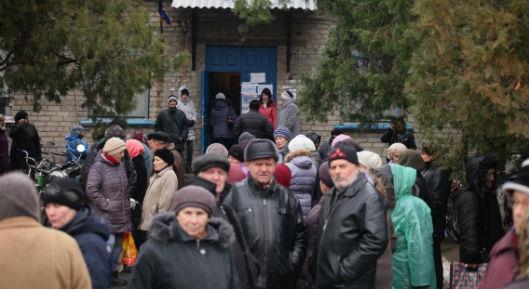New UN report finds food insecurity, social vulnerability in eastern Ukraine

Rural households affected by the ongoing conflict in eastern Ukraine urgently need help to restart agricultural production. This type of assistance would help safeguard and restore livelihoods, recover incomes, and ensure sustainable food security, a new FAO report published today argues.
The study presents an analysis of social and economic vulnerability in the conflict-affected Donetsk and Lugansk regions of Ukraine, with a particular focus on rural people living along the engagement line.
To produce the report, FAO measured the economic and social vulnerability of all rural households – in both government-controlled and non-government controlled areas. It assessed their level of exposure to shocks, and analyzed the coping strategies used by affected households.
FAO looked at current impact, status and needs among the conflict-affected population, and analyzed the evolution of impact over time. A similar assessment was conducted by FAO at the end of 2015, the findings of which offer a basis for comparison.
With its fresh data and solid analysis, the new report provides government decision-makers, international organizations and other interested parties with a basis for setting priorities, and choosing effective strategies for addressing food insecurity and poverty. Specifically, it gives indications for strengthening the productive capacities of the rural population and revitalizing agricultural production.
To be considered “not vulnerable,” a household should have at least one functional agricultural asset and one functional means of transport. Based on this definition, slightly more than half of the surveyed households can be considered as vulnerable.
According to the report, the overall value of immediate assistance required by the most vulnerable population is estimated at approximately US$ 5.9 million.
Key numbers
- Exposure to both covariate and idiosyncratic shocks affects one-third of households, a significant reduction compared to 2015
- 55 percent of households are still exposed to monetary poverty, with one-third living in poverty with incomes below US$ 100 per month
- Economic (work-related) migration is rampant, affecting up to 30 percent of households in the government-controlled areas and half of the households in the non-government controlled areas
- Most livestock producers, representing 87 percent of all farmers, reported partial destocking – mainly due to the lack of animal feed or cash, which in turn are direct results of rising prices and changing cropping patterns
- While 95 percent of households have access to land, only 61 percent are engaged in crop production – down from 91 percent in 2015.
“A key lesson from this report is recognizing that rural communities have much potential, and that investment can empower them through integrated approaches,” said Farrukh Toirov, coordinator of FAO’s emergency programme in Ukraine. “This should start with creating basic physical and social infrastructure, for example by providing equipment, knowledge, and assistance on cooperation among farmers.
“Investments should also target relevant skills development and entrepreneurship support,” Toirov continued, “including through cooperatives and innovative financial mechanisms.”
The new FAO report suggests that the donor community make livelihood interventions a central priority, effectively utilizing the significant development potential that exists in the region.
The study lays out three lines for intervention
- The first involves working with communities to maximize the use of local resources and increase benefits from the changes in cropping patterns
- The second is to build up the necessary infrastructure to connect rural areas and urban markets, since today most villages have no roads, poor electrical power grids and almost no storage facilities
- The third involves building resilience by creating income-generation opportunities, advancing knowledge and cooperation.
The current study is FAO’s third assessment of the agriculture sector in eastern Ukraine – following the previous Socio-economic impact and needs assessment of rural households along the contact line in 2015, and the Comprehensive Agriculture Study of mid-2017.
20 December 2017, Kyiv, Ukraine
